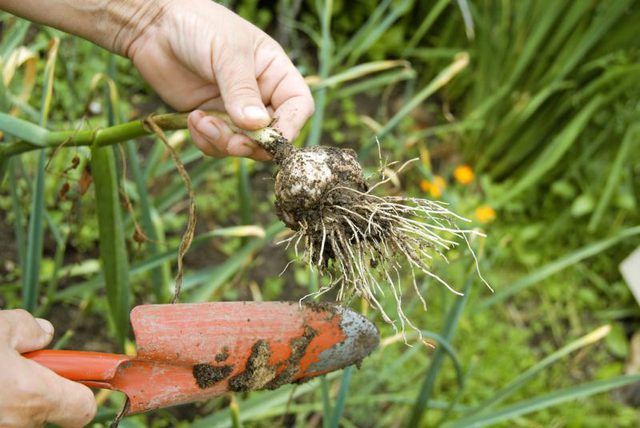Bulbs
Flower Basics
Flower Beds & Specialty Gardens
Flower Garden
Garden Furniture
Garden Gnomes
Garden Seeds
Garden Sheds
Garden Statues
Garden Tools & Supplies
Gardening Basics
Green & Organic
Groundcovers & Vines
Growing Annuals
Growing Basil
Growing Beans
Growing Berries
Growing Blueberries
Growing Cactus
Growing Corn
Growing Cotton
Growing Edibles
Growing Flowers
Growing Garlic
Growing Grapes
Growing Grass
Growing Herbs
Growing Jasmine
Growing Mint
Growing Mushrooms
Orchids
Growing Peanuts
Growing Perennials
Growing Plants
Growing Rosemary
Growing Roses
Growing Strawberries
Growing Sunflowers
Growing Thyme
Growing Tomatoes
Growing Tulips
Growing Vegetables
Herb Basics
Herb Garden
Indoor Growing
Landscaping Basics
Landscaping Patios
Landscaping Plants
Landscaping Shrubs
Landscaping Trees
Landscaping Walks & Pathways
Lawn Basics
Lawn Maintenance
Lawn Mowers
Lawn Ornaments
Lawn Planting
Lawn Tools
Outdoor Growing
Overall Landscape Planning
Pests, Weeds & Problems
Plant Basics
Rock Garden
Rose Garden
Shrubs
Soil
Specialty Gardens
Trees
Vegetable Garden
Yard Maintenance
How to Grow Garlic
How to Grow Garlic. When it comes to growing your own garlic (Allium sativum), proper timing means the difference between a harvest of healthy, densely flavored bulbs and anemic, tasteless ones. Although garlic is suitable for U.S. Department of Agriculture plant hardiness zones 4 through 9, it produces the most flavorful bulbs when grown in cool...

When it comes to growing your own garlic (Allium sativum), proper timing means the difference between a harvest of healthy, densely flavored bulbs and anemic, tasteless ones. Although garlic is suitable for U.S. Department of Agriculture plant hardiness zones 4 through 9, it produces the most flavorful bulbs when grown in cool soil. In a Mediterranean climate, planting between late October and early November gives the cloves adequate time to form bulbs. If fall frosts are possible in your area, wait until after the first one to plant. The earlier you get cloves the ground, the larger your harvested bulbs will be.
Sun and Soil
Even in winter, garlic needs at least six hours of daily sun. It grows best in loose, organically rich well-drained loam. If necessary, improve the planting bed's lack of drainage or fertility with plant-based compost or well-aged manure before planting. Loosen its top 6 to 8 inches with a spade or tiller and work in 2 to 3 inches of compost or 1 inch of manure. The Cornell University Department of Horticulture estimates that 30 pounds of compost covers 10 square feet of soil to a 1-inch depth. Space the rows of garlic 1 foot apart, with 3 to 5 inches between the individual cloves.
Mulch and Water
Mulching newly planted garlic with a 2-inch layer of straw lures soil-aerating earthworms to the garden bed and discourages weeds. Don't water until the garlic's new, green shoots appear. After that, a weekly total of 1 inch of rain or supplemental water is enough until the foliage begins yellowing in early summer. That equates to 6 gallons of water per 10 square feet of soil. The goal is to keep the soil consistently moist. After the leaves yellow and until you harvest the bulbs, let the soil dry out between watering sessions.
Fertilizer Application
When garlic's shoots are 6 to 8 inches high, side dress the bed with granulated, high-nitrogen 21-0-0 fertilizer. Rake the mulch aside and dig 1- to 2-inch-deep furrows between the rows with the edge of a hoe. Keep them 6 inches from the plant. Sprinkle 2 1/2 tablespoons, or the label's specified amount, of fertilizer evenly over each 10 square feet of furrow and cover it with soil. Water the furrows immediately and reapply the mulch.
Potential Problems
Pests rarely affect garlic, and planting certified disease-free cloves from a reputable nursery dramatically reduces the likelihood of disease. Weeds may become troublesome because garlic foliage doesn't provide enough shade to keep them from germinating. Pulling or digging the weeds up as soon as they sprout stops them from stealing the garlic's moisture and nutrients without exposing it to chemical herbicides. Replacing the straw mulch as it decomposes also helps.
About Those Curling Stalks
In late spring, hardneck garlic varieties (Allium sativum var. ophioscorodon) send up thick flower stalks that eventually curl around themselves. Cut them for use in salads because leaving them on the plants channels energy away from bulb development.